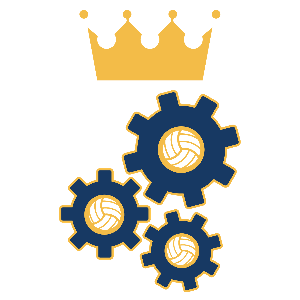A Tip for Young Players
Today, one of the most common topics that youth coaches talk about with their players is the idea of “scanning” or “checking your shoulder.” I often tell my own kids to take pictures, something I heard another youth coach say that stuck with me and seems to work for my boys.
The reality is that the best players in the world check their shoulders, scan the field, and have a picture of what is going on, and where the opportunities are better than everyone else.
The great Arsene Wenger once said “the very good players scan six to eight times in the last ten seconds before they get the ball, where normal ones three to four times. That is a major step for improvement” So what does that mean? They are constantly taking pictures, getting a feeling of where things are, and where the ball is. The ball is their friend and they are always finding a way to be welcome to receive it. Wenger said that “Great players when you watch them isolated from the ball, you see that their head is like a radar.”
If this is so critically important how do we help kids develop this skill? How do we create environments where this is necessary to solve the problems created? What can we do everyday to help us build this habit?
We have several ways we do this within our training environments either in isolation, or in our small group, or academy groups, but today’s post is a tip for you to do this every day on your own and start building a habit that will help you forever on the training pitch. Before we hand out that tip. Let’s dive a little deeper into what scanning really is. The key as many have pointed out is not just “taking the pictures” or “scanning” but the quality of how we analyze those pictures and the decisions we make because of them.
WHAT IS SCANNING?
In an interview, Arsene Wenger said “As a player, whenever I get the ball I have to analyze, then decide and finally execute. Perception plays a huge role in this. I worked with a University in Norway to identify how I could improve perception. Basically, I came to the conclusion that is about getting as much information as possible before I get the ball. I call it scanning.”
Take a look at this video of one of the best to ever do it. Xavi Hernandez who famously acted as the metronome for FC Barcelona during a period of time when they were arguably the best team ever to play the game. He once said during an interview with the Guardian, “Think quickly, look for spaces. That's what I do: look for spaces. All day. I'm always looking. All day, all day. [Xavi starts gesturing as if he is looking around, swinging his head]. Here? No. There? No. People who haven't played don't always realize how hard that is. Space, space, space. It's like being on the PlayStation. I think $h*t, the defender's here, play it there. I see the space and pass. That's what I do.”
Why did we choose Xavi as the poster boy for scanning? As a part of the study we mentioned earlier that Arsene Wenger did with Professor Geir Jordet at the Norwegian School of Sports they filmed players, 250 of them to see what they did before they received the ball. What they found is that players like the great Steven Gerard, Liverpool legend and Captain, were outstanding. Stevie G averaged 0.61 searches per second. His countryman, and Chelsea Legend himself Frank Lampard edged him out with 0.62 searching per second. What’s incredible is that Xavi came in at 0.83 searchers per second!
Here is another great example of scanning by Frank Lampard.
Go back and look at the greatest midfielders and they all have one thing in common. They take more pictures, or scan the field more often, and process the information better than anyone else. Look at Paul Scholes, David Beckham, Messi, Pogba, Iniesta, DeBruyne, etc. They are masters of this skill.
TODAY’S TIP
While there are a lot of things we can do as coaches to improve training environments to make as Wenger calls it perception the first thing we work on vs. the last. Here is one simple tip that you can do today to improve your ability to scan.
The next time you are walking after training. Instead of staring at your phone, or your boots. Scan. Look around, check your shoulders see what’s going on. Walking down the street, scan, take pictures. Build this into your daily habit. Constantly check your shoulders. You’ll be amazed at the things you begin to notice, and how quickly it translates to you game on the pitch. This has to be something you are doing constantly to become a habit. Build it into everything you do. Walk down the stairs, scan. Head to the bathroom, scan. Give it a try and let us know how it works. What else do you do on your own to improve your ability to scan, to take pictures.
We will have more tips on improving scanning soon, and are excited about some new partnerships we have in the works to help our players improve their daily habits, improve their development, and continue to build confidence everyday.
Thanks for reading, and remember “take pictures!”
C
P.S. If you enjoyed this. Don’t keep us a secret. Share it with friends, and follow us on Instagram and Facebook and engage with our CSF community.

